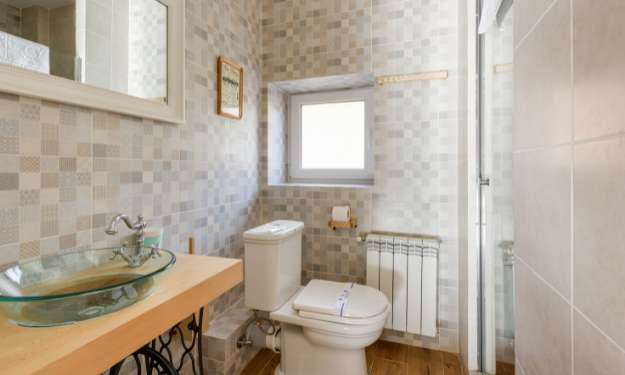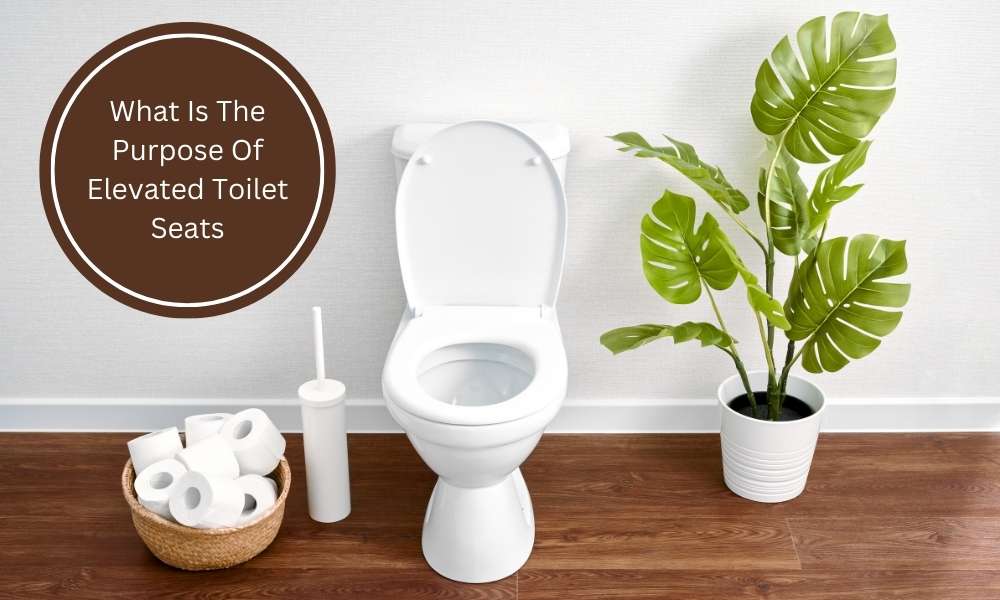Elevated toilet seats serve a crucial purpose in enhancing accessibility and comfort for individuals with specific mobility challenges or disabilities. The primary goal of it is to raise the height of the toilet bowl, providing users with an elevated platform that facilitates easier sitting down and standing up. This simple yet effective adaptation plays a vital role in promoting independence and dignity for those who may face difficulties due to conditions such as arthritis, joint pain, or limited leg strength. By addressing these mobility concerns, It contribute to a more inclusive and accommodating environment within bathrooms, fostering a sense of autonomy and well-being for individuals with diverse needs. This article explores the significance of It in improving daily life and promoting a barrier-free experience for a wide range of users.
Who Can Benefit From Toilet Seats?

Toilet seats cater to A diverse range of individuals who may encounter challenges related to mobility, joint issues, or disabilities. Elderly individuals, people with arthritis, those recovering from surgery, and individuals with limited leg strength find significant relief And support through the use of elevated seats. These adaptive devices are designed to accommodate various needs, ensuring that a broader spectrum of users Can maintain their independence And dignity in the privacy of their bathrooms.
Why Choose Elevated Toilet Seats For Accessibility?
The choice of toilet accessibility is rooted In their transformative impact on the daily lives of individuals facing mobility constraints. These seats effectively raise The height of the toilet, reducing the strain on joints and muscles during the process of sitting down And standing up. Unlike conventional toilets, elevated seats provide a more comfortable and accessible option, minimizing the risk of accidents or injuries. By incorporating elevated seats into bathrooms, one Can create an environment that prioritizes inclusivity, making it easier For everyone, regardless of their physical abilities, To use the facilities with confidence.
How Do Elevated Toilet Seats Enhance Comfort?
The comfort-enhancing features of it go beyond their accessibility benefits. The elevation ensures a more natural And ergonomically friendly posture, reducing strain on the knees and back. This improved alignment promotes a comfortable and relaxed experience, especially For those with chronic pain or conditions that affect joint mobility. Additionally, many toilet come with padded surfaces, further enhancing comfort and making them a practical choice For individuals seeking a more pleasant bathroom experience.
Understanding Toilet Seats

Toilet seats function as adaptive solutions that bridge the gap between traditional toilets and the diverse needs of users with mobility challenges. These seats are typically easy To install and Can be temporary or permanent additions to existing toilets. Some models offer customizable height options To suit individual preferences. Understanding the purpose of it involves recognizing their role in fostering independence, preventing injuries, and ensuring A more comfortable bathroom experience for a wide range of individuals. As an essential component of accessible design, elevated seats contribute To creating environments that prioritize the well-being and autonomy of all users.
The Purpose Of Toilet Seats

It serves a crucial purpose In addressing The diverse needs of individuals with mobility challenges or disabilities. The primary goal Is to elevate The height of the toilet bowl, providing users with A more accessible platform for sitting down and standing up. This simple modification Is particularly beneficial For the elderly, those recovering from surgery, or individuals with joint pain, ensuring that The bathroom remains a place of independence and dignity.
Benefits Of Elevated Toilet Seats

The advantages of using it are multifaceted. Firstly, these seats promote safety by reducing the strain on joints And muscles during The sitting and standing process, thereby lowering the risk of accidents or injuries. Secondly, seats contribute to A more comfortable experience, especially for individuals with chronic pain or limited mobility. Moreover, these adaptive devices enhance inclusivity, making bathrooms more accessible for a broader range of users. Overall, the benefits extend beyond mere convenience, positively impacting the well-being And daily lives of those with specific mobility considerations.
How To Choose The Right Elevated Toilet Seat

Selecting the appropriate elevated toilet seat involves considering various factors to ensure it meets individual needs. Height customization is a key consideration, as different users may require different elevations. Additionally, features like padded surfaces or armrests contribute to comfort and stability. Compatibility with the existing toilet, ease of installation, and material durability are also essential factors to assess. By carefully evaluating these aspects, individuals can choose the right elevated toilet seat that aligns with their specific requirements, thereby optimizing both functionality and comfort.
Maintaining Toilet Seats

Maintaining seats is crucial for their longevity and continued effectiveness. Regular cleaning with mild soap and water helps prevent the buildup of germs and ensures a hygienic environment. Periodic checks for loose screws or any signs of wear and tear are essential to address issues promptly. It is advisable to follow the manufacturer’s guidelines for maintenance and cleaning to preserve the integrity of the elevated toilet seat. By incorporating simple upkeep practices, users can prolong the life of their elevated toilet and continue to benefit from the accessibility and comfort they provide.
Addressing Concerns and Misconceptions

Elevated toilets, despite their numerous benefits, often face concerns and misconceptions that warrant clarification. One common misconception is that elevated seats are exclusively for the elderly. In reality, these adaptive devices cater to a broad spectrum of individuals with varying mobility challenges or disabilities. Another concern is the fear of instability, yet modern it are designed with stability features, such as secure locking mechanisms and sturdy materials, to ensure user safety. By addressing these concerns and debunking misconceptions, users can make informed decisions about integrating it into their bathrooms, recognizing their potential to enhance accessibility for a diverse range of users.
Elevated Toilet Seats Vs. Traditional Toilet Seats
A critical comparison between toilet and traditional counterparts sheds light on the distinct advantages of the former. Elevated seats offer a higher sitting position, reducing the strain on joints and muscles during use. This is particularly beneficial for individuals with arthritis, mobility issues, or those recovering from surgery. Traditional seats, while standard, may pose challenges for users with limited mobility. Elevated seats, on the other hand, provide a more inclusive solution, promoting independence and comfort. Understanding the differences allows individuals to make informed choices based on their specific needs, ensuring a bathroom environment that accommodates everyone.
Conclusion
Elevated toilet seats play a pivotal role in enhancing accessibility, comfort, and safety within the bathroom environment. Addressing concerns and misconceptions is crucial in promoting wider acceptance and understanding of these adaptive devices. By dispelling myths surrounding their usage and recognizing the diverse benefits they offer, individuals can make informed decisions to improve their overall bathroom experience. The comparison with traditional seats underscores the unique advantages of elevated options, emphasizing the importance of creating inclusive spaces that prioritize the well-being of users with varying mobility requirements. Ultimately, the adoption of it represents a positive step towards creating more accessible and user-friendly environments for individuals of all ages and abilities.


